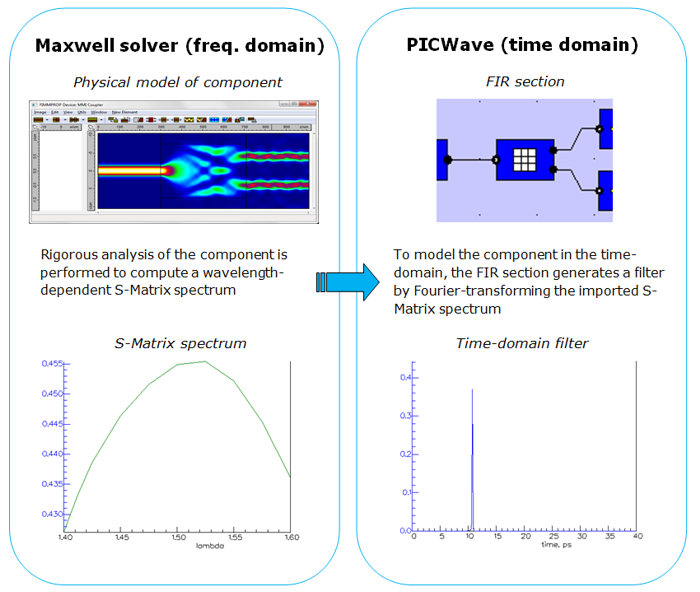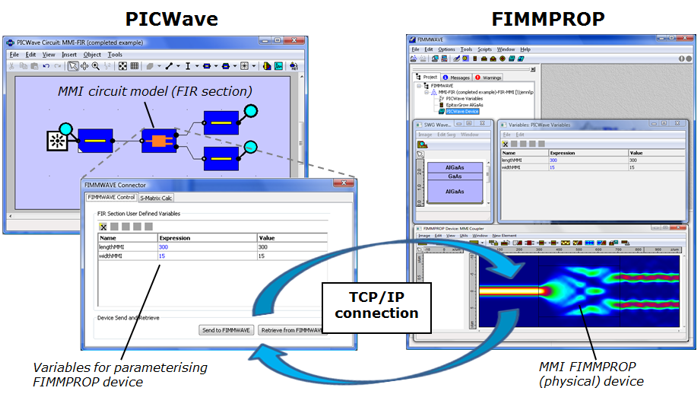PICWaveA photonic IC, laser diode and SOA simulator |
    |
Import passive component model from FIMMPROPPICWave can import detailed models of passive components (e.g. tapers, MMIs, j-junctions etc.) into its optical circuit simulations through the use of Finite Impulse Response (FIR) sections. An FIR section allows one to import the wavelength response of a passive component and generate an equivalent time-domain filter so that the component can be modelled in the time-domain. PICWave can thus take advantage of the capabilities of frequency-domain Maxwell solver software such as FIMMPROP: the wavelength response (scattering matrix spectrum) of a component can be computed rigorously in FIMMPROP and imported into PICWave, where the component can be modelled in the time-domain, usually as part of a larger circuit.
The FIR section has a special user interface enabling a direct connection to FIMMWAVE/FIMMPROP via TCP/IP. It enables an FIR section in PICWave to store a FIMMPROP device model of a component, send it to FIMMPROP, and run FIMMPROP simulations remotely to build an S-Matrix spectrum for the component that can be used by the FIR section. Furthermore, the FIMMPROP device can be parameterised in terms of a set of variables so that the S-Matrix will automatically be recomputed if the values of the variables are changed in PICWave. Using PICWave's building block system one can create building block libraries of parameterised FIMMPROP components, which can be stored and managed in one location. These can then be re-used in all future circuit designs to create tailored components, even by designers without any knowledge of FIMMPROP.
You can see here an example of PICWave importing a ring coupler model from FIMMPROP for the simulation of a large ring resonator.
|





